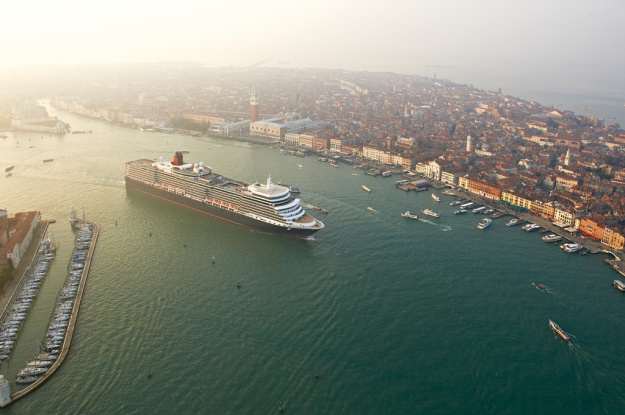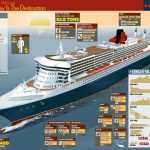Less than a century ago, ocean liners were the only way to travel between the United States and Europe. During the early 20th century, ship lines like White Star and Cunard competed for the honor of having the fastest and most elegant ships at sea.

Today, when you can reach London from New York City in less than six hours by air, a six-day Transatlantic voyage is a luxury, a once-in-a lifetime experience, not just a mode of transportation.
About Transatlantic Cruises
There are two distinct types of Transatlantic cruises–crossings and repositioning cruises.
CROSSINGS
Crossings are regularly-scheduled voyages between the United States and a European port, usually Southampton, England.
Currently, Cunard’s “Queen Mary II” is making such voyages during the warmer season, between April and November. Crossings tend to be somewhat formal and offer a glimpse of what sailing on the grand ocean liners of the 19th and early 20th century must have been like.
REPOSITIONING
No less enjoyable are repositioning cruises, which are designed to get ships between North America and Europe before and after the European cruise season (April through September or October.)
These are one time only cruises and can depart from ports all along the Atlantic coast, most frequently New York City, Boston, Miami or Ft. Lauderdale. They tend to be more casual than crossings and frequently offer a good value for the money.
Several lines, including Holland America, Royal Caribbean, Celebrity Cruises and Norwegian Cruise Line, offer Transatlantic repositioning cruises.
What to expect on board
Is a transatlantic or repositioning cruise different than any other voyage?
ATTIRE
Daytime dress is casual on a Transatlantic voyage. However, this isn’t a Caribbean cruise.
The weather in the north Atlantic can be stormy and chilly even during the summer months. It’s wise to pack a few sweaters and a jacket. Evening attire depends on the ship line. The “Queen Mary 2” is rather formal; the Royal Caribbean ships are much less so.
DINING
Dining is a big event on any cruise, but it is especially exciting on a Transatlantic cruise, since you are on the ship all day. On the “Queen Mary II” there are several dining rooms, assigned based on your cabin category.
Evenings are formal on this ship, with a jacket and tie de rigeur for men. There are also one or two formal nights, where a tuxedo for men and formal attire for women is recommended. Some of the most well-regarded chefs in the world help Transatlantic ship lines develop their menus. The results are delicious and make meal time something to look forward to throughout the cruise.
Dinner dress on repositioning cruises tends to be more casual, although most of these ships have one or two formal nights for fun. Most ships have two seatings for dinner. The exception to this are the Norwegian Cruise Line ships, which have “free-style” dining, where you can dine where, when and with whom you desire each night.
ACTIVITIES
You needn’t worry about getting bored on a Transatlantic cruise.
Although there aren’t any ports in the middle of the Atlantic, there are plenty of activities scheduled on all crossing and repositioning cruises. In addition to meals and sitting on deck catching up the latest novels, these sea voyages offer lectures with notable guests on board, indoor gyms and swimming pools, libraries, spas and beauty salons.
Some lines, such as Holland America Line, have culinary centers where they offer cooking classes and wine tastings. Some of the Royal Caribbean ships even have ice-skating rinks on board.
Taking a Transatlantic cruise is a once-in-a lifetime experience.
Get the most out of your voyage by learning a little about what to expect before your say “bon voyage!”


